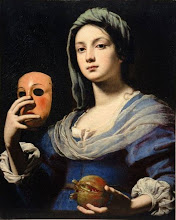"I began to understand that the goal of psychic development is the self. There is no linear evolution; there is only a circumambulation of the self. Uniform development exists, at most, at the beginning; later, everything points toward the centre. This insight gave me stability, and gradually my inner peace returned."
-Carl Jung, Memories, Dreams, ReflectionsPradakshina (circumambulation)
"One of the customary aspects of going to a temple is the practice of going around the deity or the sanctum sanctorum. This is called pradakshina. Typically, pradakshina is done after the completion of traditional worship (pooja) and after paying homage to the deity. We cannot draw a circle without a center point. The Lord is the center, source and essence of our lives. We acknowledge this by performing pradakshina. Also, every point on the circumference of a circle is equidistant from the center. This means that wherever or whoever we may be, we are equally close to the Lord. His grace flows towards us without partiality. The pradakshina is done clockwise. Indeed, the word pradakshina means “moving rightward” in Sanskrit. The reason is, not as someone said, to avoid a traffic jam (Although, it certainly helps!). As we do pradakshina, the Lord is always on our right. Hindus traditionally associate right side with auspiciousness. So as we circumambulate the deity, we remind ourselves to lead an auspicious life of righteousness, with the Lord who is the indispensable source of help and strength, as our guide - “the right hand”. Often, devotees additionally circumambulate around themselves (turning in place) again, thereby recognizing the presence of divinity in themselves."
Source: Marg, Vol 2, No. 4 (July-August 2006)























































